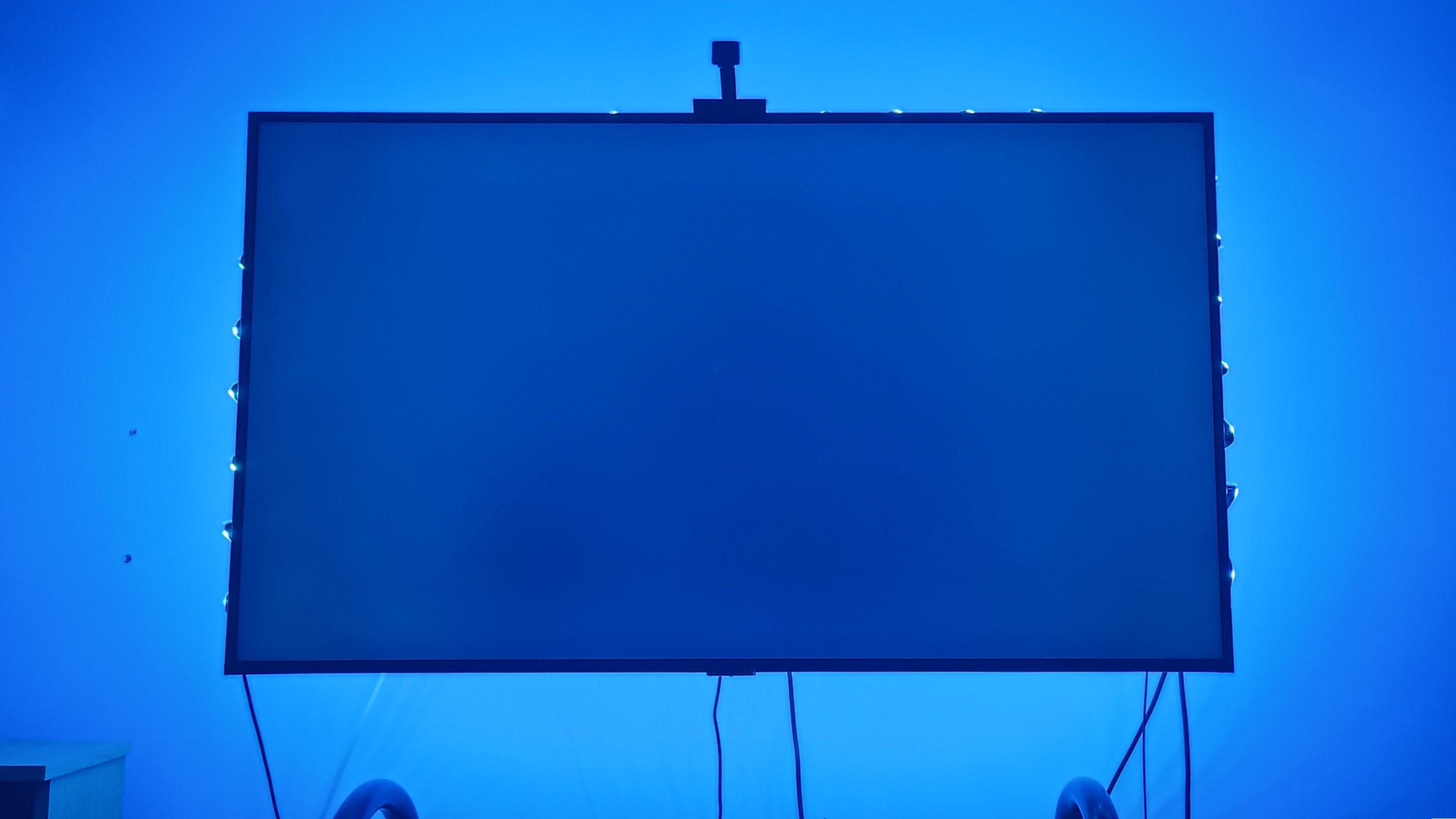What Hi-Fi? Verdict
The Model 8 offers a solid dose of SME DNA in this compact and neat turntable package
Pros
- +
Unflustered and stable presentation
- +
Even-handed approach to music replay
- +
Impressive build and finish
- +
Fuss-free in use
Cons
- -
Hefty price increase over its predecessor
- -
Lacks a touch of rhythmic and dynamic subtlety
Why you can trust What Hi-Fi?
SME is not a company known for rapid product changes. Typically, its record players take years to develop and stay in production for decades. Witness the company’s first ever turntable, the Model 30, launched in 1991 and still being made today.
The same applies to its second deck, the Model 20, released in 1992, and still in production. So, when SME replaces its entry-level Model 6 after just five years, it’s something of a surprise.
The SME Model 8 feels more like an improved Mk II version of its predecessor than the all-new product the name change suggests. Generally, that’s no bad thing, considering how much we liked the older deck.
But we also note that the new model’s price has increased significantly from the original’s at launch. When we tested the Model 6 back in 2020, it retailed for £6295 / $8404 / AU$11,411. The new SME Model 8 turntable will set you back £9999 / $10,835 / AU$20,999.
We all know that the price of most things has gone up in the hi-fi industry in recent years, but even so, the level of increase here could well be a stumbling block. It not only raises expectations, but puts the Model 8 in the same ballpark as Vertere’s terrific MG-1 MkII turntable, and well above excellent alternatives such as Michell’s Gyro SE and the VPI Prime 21+.
The question is whether it is good enough to rise to the challenge.
Build & design
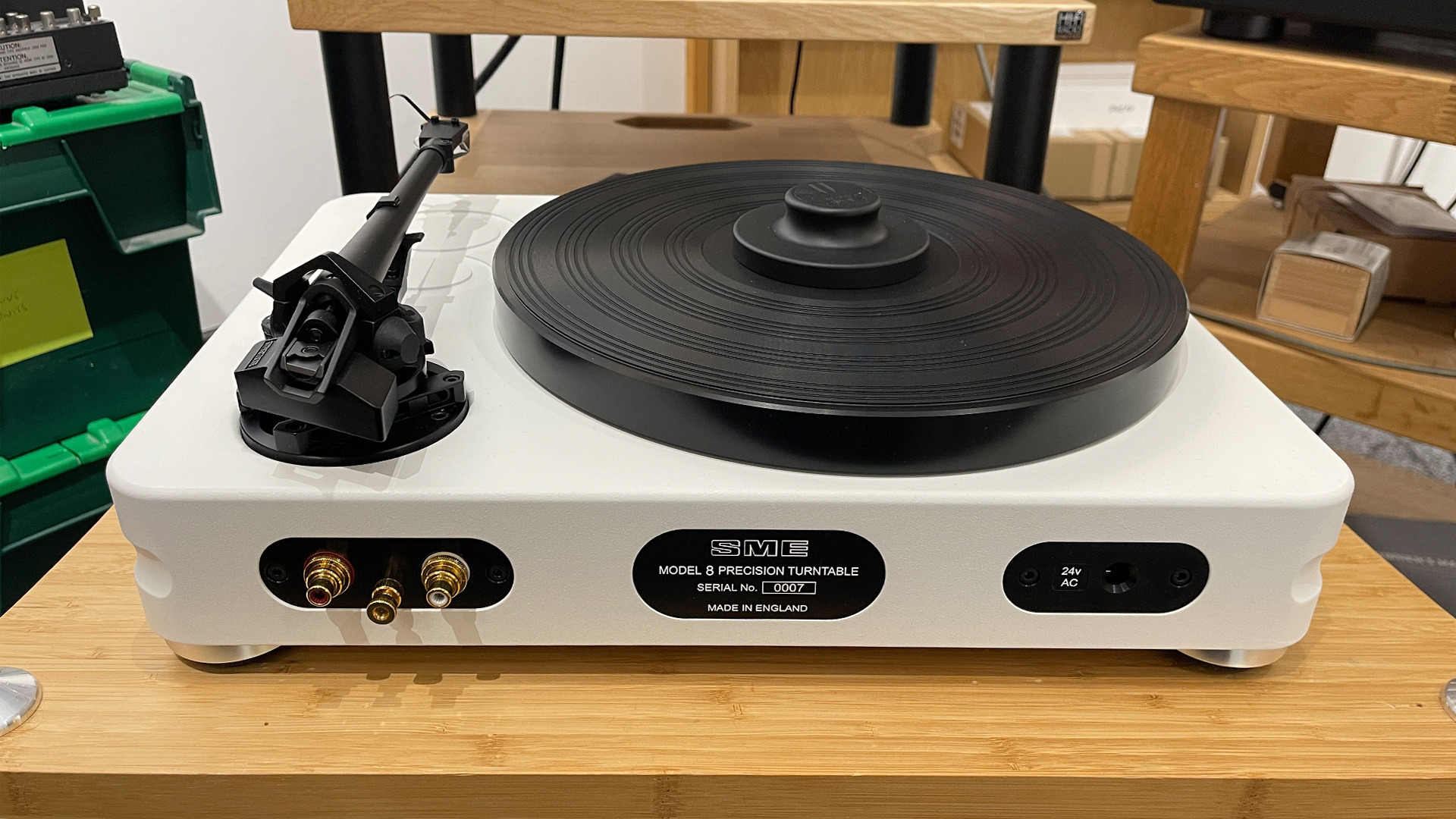
The new design hardly deviates from its predecessor’s basic template. The Model 8 remains a compact, belt-drive deck with an outboard speed controller. SME has continued to use some interesting and unusual materials in its construction.
The latest hi-fi, home cinema and tech news, reviews, buying advice and deals, direct to your inbox.
The plinth is a dense structure made of CNC-machined resin material rather than the aluminium slabs seen in the company’s other record players. It is considerably thicker than before and has 40 per cent more mass.
The choice of resin not only reduces cost compared to aluminium, but is also claimed to offer excellent rigidity and damping properties.
While its appearance drew mixed responses from our team, some likening it to a ‘Fisher Price’ toy, there is no denying the quality of the build and finish.
This is an immaculately made product that gives off the aura of something built to last decades. Every part of it feels solid and carefully considered, from the buttons on the speed controller to the immaculately machined plinth and smooth operating tonearm. It all inspires confidence.
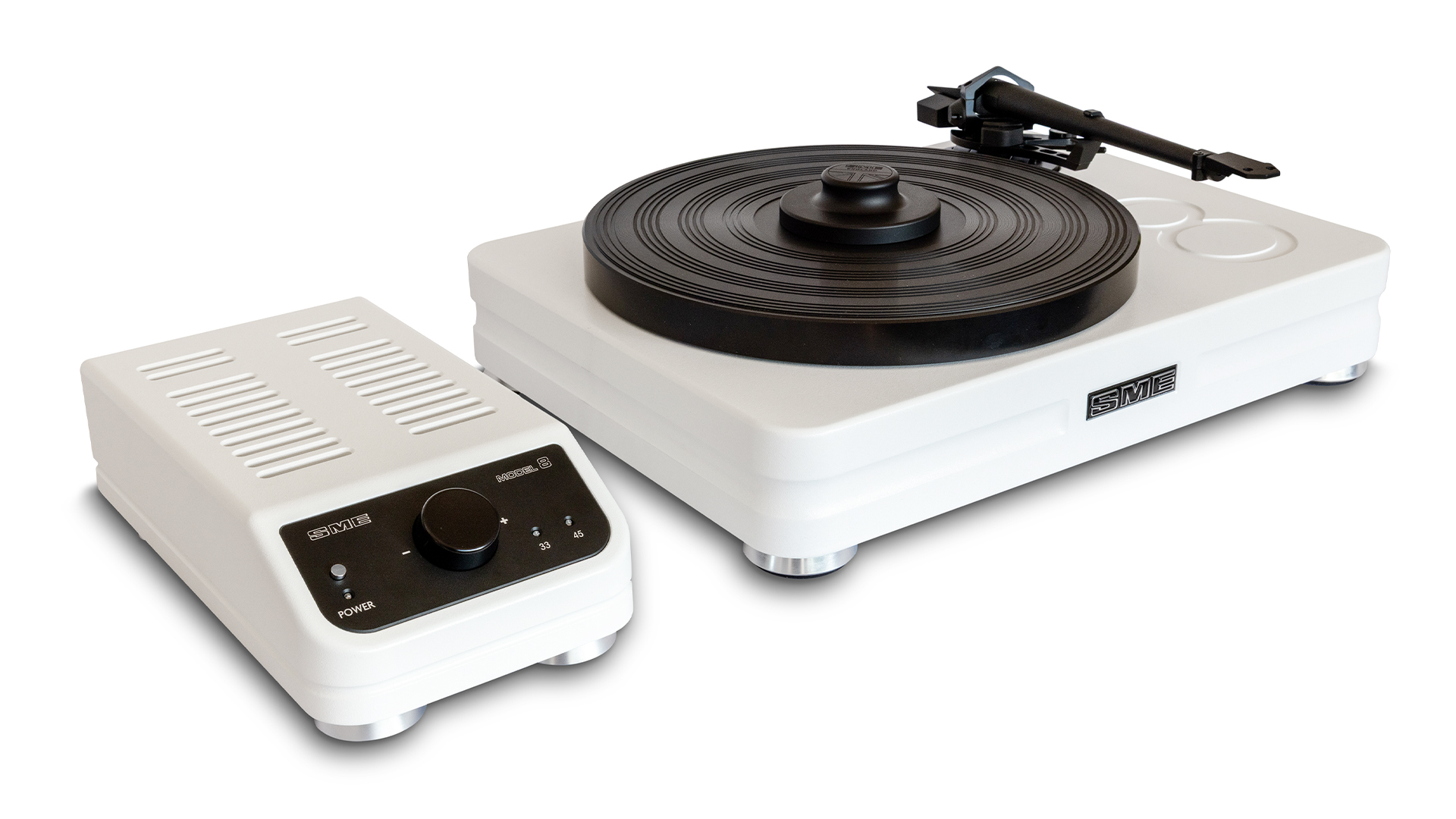
Type Belt drive
Operation Manual
Speeds 33⅓, 45 RPM
Speed change Electronic
Cartridge Audio Techica AT-ART20
Phono stage? No
Bluetooth? No
USB? No
Dimensions (hwd) 15 x 43.5 x 32cm
Weight 12.4kg (record player) + 2.4kg (power supply)
Finishes x 3 (black, white, midnight blue)
The Model 8 is essentially a solid design, bar the isolation provided by the feet. This is in stark contrast to the elegant ‘O’-ring suspended subchassis structure found on the company’s more upmarket decks.
Still, in use, the Model 8’s arrangement proves effective enough, and we find it to be less sensitive to supports and placement close to speakers than many similarly configured rivals.
Almost all the turntables that pass through our test room tend to have aluminium platters, but that’s not the case here. As with the previous model, SME’s engineers have opted for an acetal polymer instead, though this time it is machined so that more of its mass is focused on the outer edge, which increases rotational inertia and so helps with speed stability.
The new platter looks bulkier than the one fitted to the Model 6, but it weighs no more.
The deck’s main bearing is a single-point design that is machined to the same standard as the company’s more upmarket products. Drive is provided by a 24-pole AC motor controlled by the sophisticated new outboard speed controller, which is derived from that used on the range-topping Model 60.
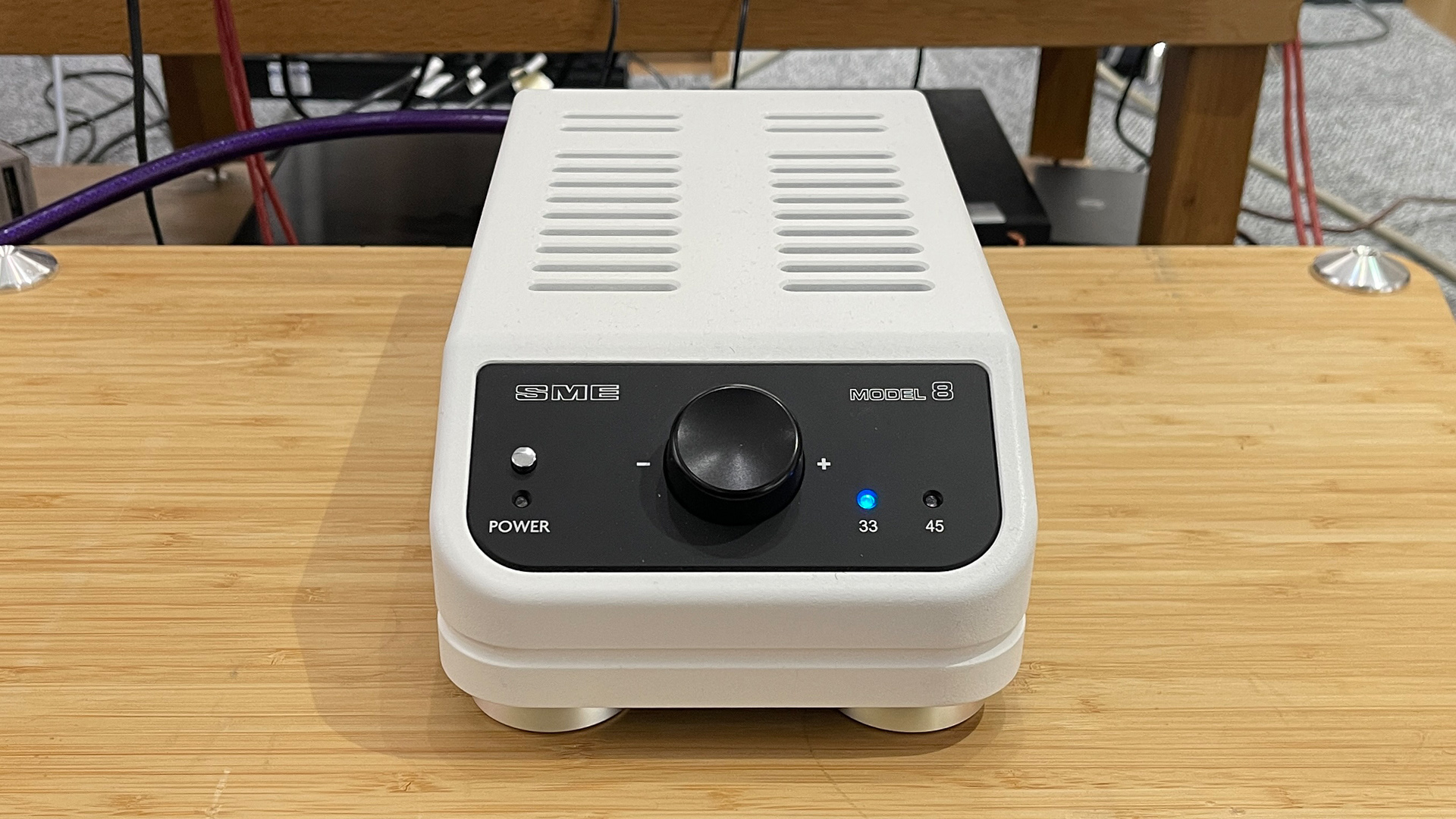
This speed controller is much changed from that used on the Model 6 and is easy to use. Unusually, the controller allows for subtle adjustments to the standard 33 1/3 and 45 RPM speed options to compensate for any variances in the records. This is a nice touch that we wish others would offer.
Other notable changes from the Model 6 include high-quality WBT RCA rear sockets, now mounted on a solid metal plate, and some more stylish feet that are designed to provide isolation, as well as allow for adjustment to level the unit.
As standard, there are no interconnects included in the package, so you will have to budget for a decent set, if you already don’t have some spare.
Tonearm & compatibility
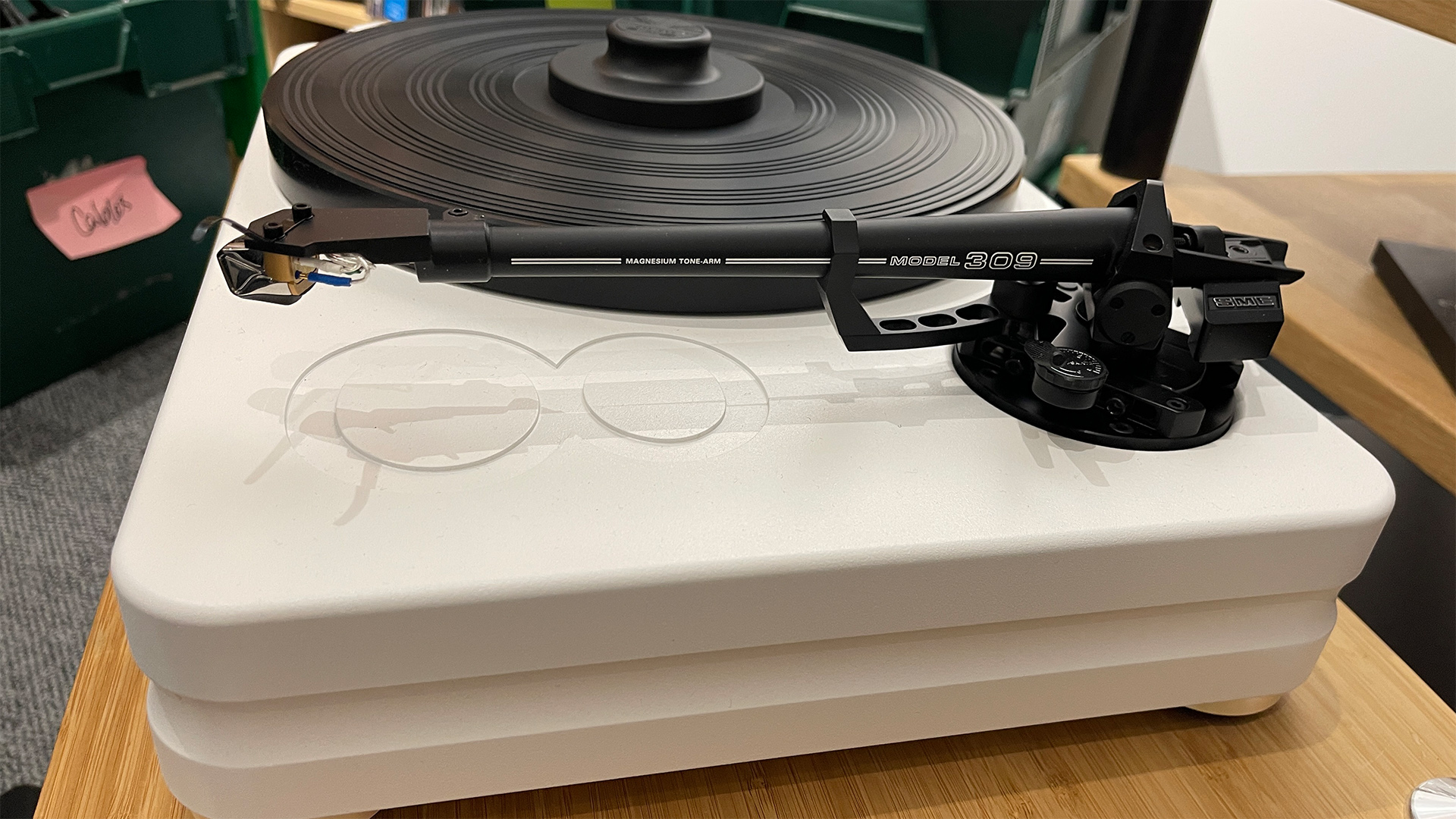
It is all change on the arm front, with the Model 6’s delicate-looking M2-9 tonearm swapped for the legendary SME Series 309 tonearm. We consider this a major upgrade, and it goes some way to justifying the Model 8 price premium over its predecessor.
The Series 309 tonearm is rightly considered something of a classic. It was originally introduced in 1988, and still feels as modern as they come. It is beautifully engineered and works with a precision that inspires confidence. Its internal wiring is from SME’s sister brand, Crystal Cable.
The arm’s set-up is simple and well thought out, while a detachable headshell makes cartridge swapping a breeze. Few rival tonearms feel as reassuring or as well-engineered as this one. Much the same applies to the Model 8 as a whole.
SME doesn’t make cartridges, and so supplied our sample of the Model 8 with the excellent Audio-Technica AT-ART20 moving coil. At £2749 / $2900 / AU$4999, this is exactly the kind of cartridge that would be partnered with this type of deck. The AT-ART20 has a decent output of 0.55mV (1kHz, 5cm/sec) and is happy with the standard 100-ohm loading most moving coil-compatible phono stages offer.
As always though, there is no harm in experimenting, because systems and tastes vary. In our reference set-up, which includes Cyrus’s Phono Signature/PSX-R2 phono stage, it performed even better with a higher loading of 150 ohms.
The rest of our system is Burmester’s 088/911 Mk III amplifier (where the optional MC phono stage module is fitted to the preamp) and ATC SCM50 speakers. We also have the PMC Cor integrated amplifier and Fyne Audio F1-8 high-end standmounters on hand to see how the Model 8 copes in a different context.
Sound
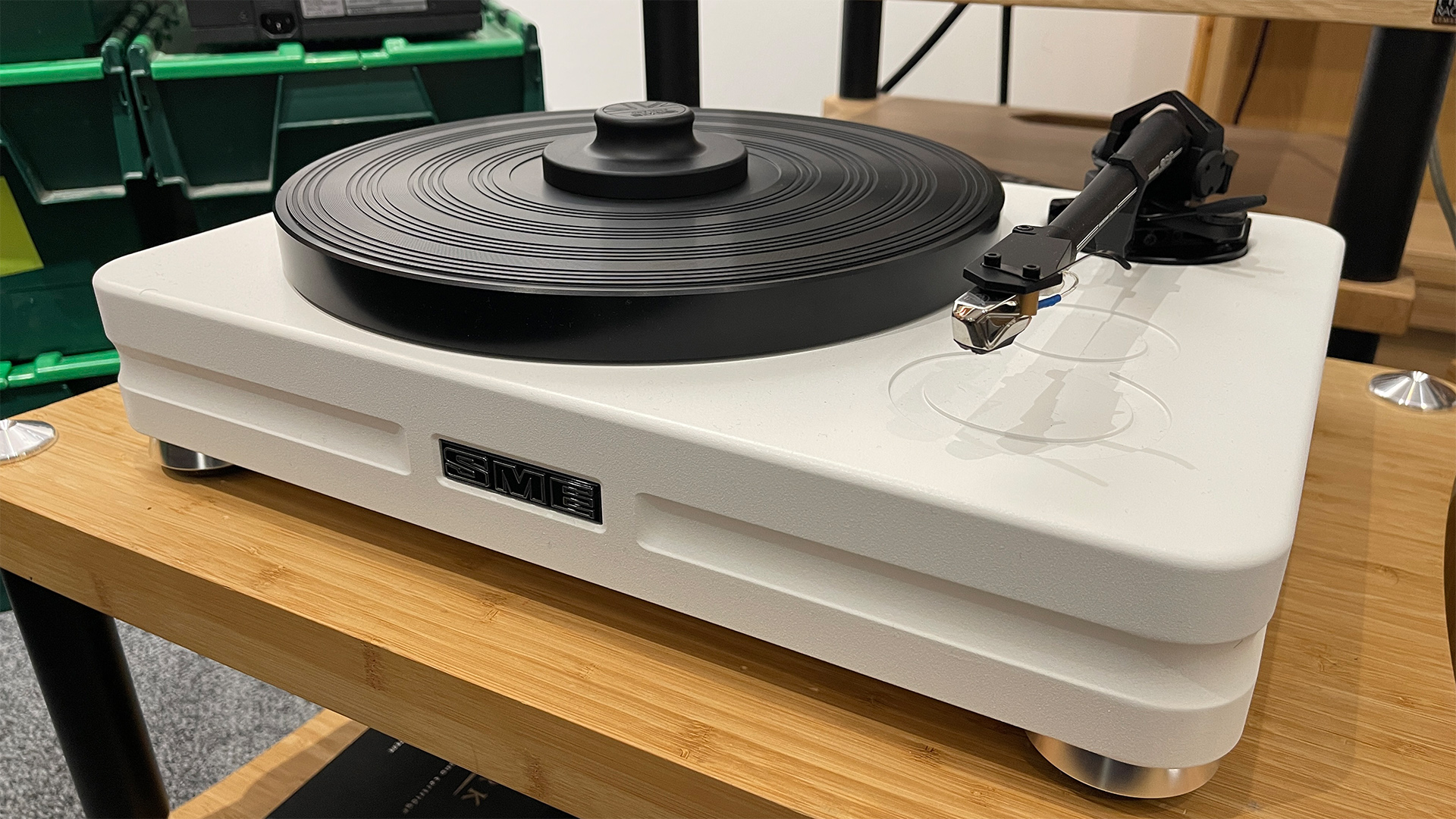
Regardless of the system, this record-playing package does well. It doesn’t take long to recognise the rich seam of SME DNA running through the Model 8’s presentation. This is an unflappable performer; one that retains an enviable degree of composure and control no matter how difficult the music gets.
Play a demanding recording such as Orff’s Carmina Burana, and it is hard not to be impressed by the record player’s ability to dig up plenty of information and assemble it into a cohesive and musical whole.
When it comes to organisation and a sense of sonic stability, we think that the Model 8 is up there with the very best at this level, provided you use the supplied hefty record clamp.
This SME delivers a solid and well-focused soundstage, too. Instruments and voices are locked in place and nicely layered. Their position doesn’t waver when things get complex, nor do things start to sound messy.
The sense of image-depth is good. We like the convincing scale and are pleased with the authority on show. Crescendos punch hard and true, and there is little sign of the Model 8 holding back during peaks.
The tonality of a record player is largely dependent on the partnering cartridge and the Audio-Technica AT-ART20 doesn’t let the side down. It is a lovely performer with an even balance and a high degree of resolution. Together with the Model 8, it produces a sound that’s rich in texture, agility and precision.
As we shift to The Boatman’s Call by Nick Cave & the Bad Seeds, we like the way this record-playing combination renders Cave's gravelly tones on Into My Arms. His voice sounds rich and full-bodied while the backing piano is delivered with conviction. Good as the sound is, we notice that we aren’t drawn into the emotion of the song as much as we would expect.
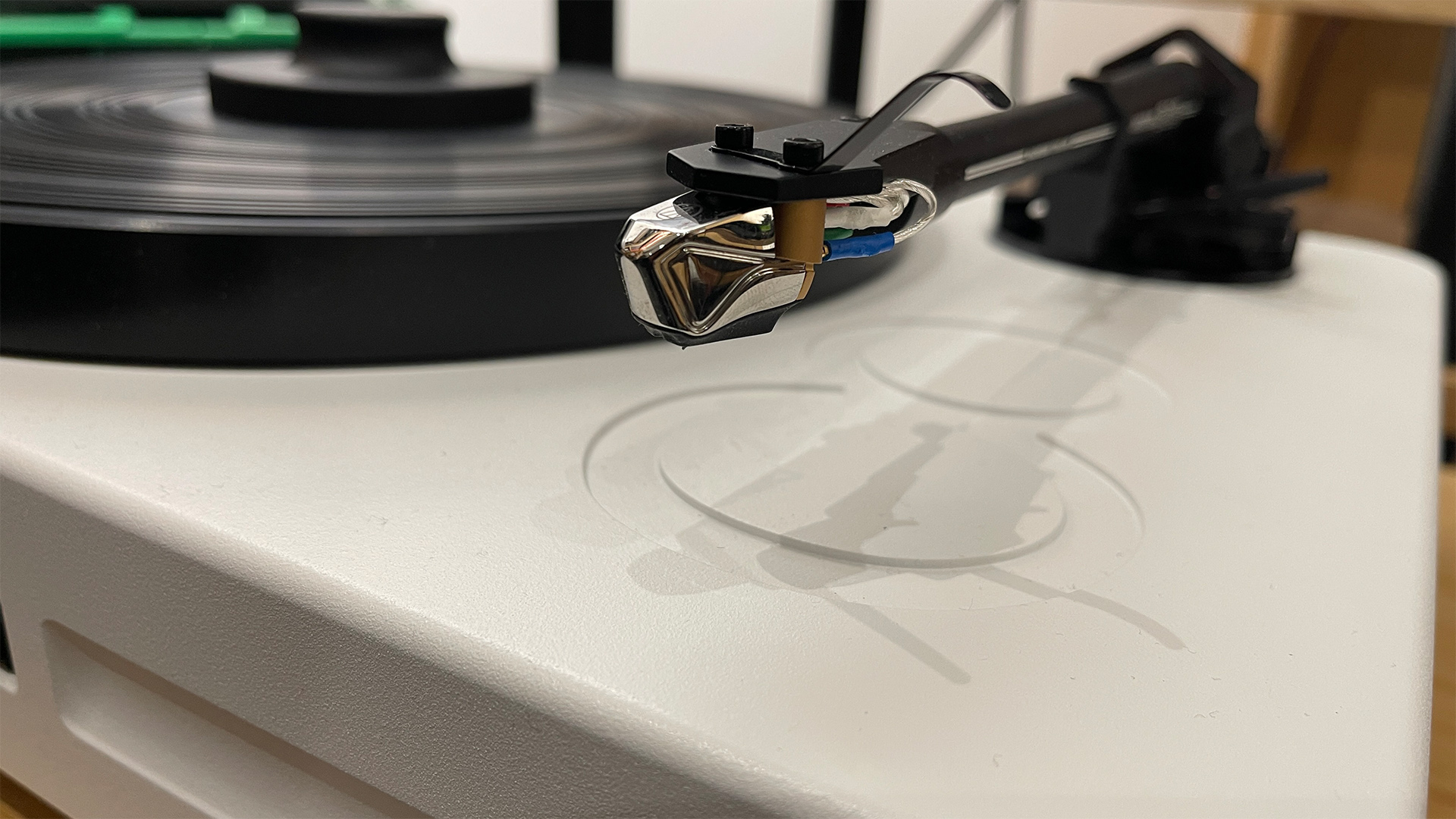
By the highest standards, it is clear that the Model 8 doesn’t quite capture the dynamic nuances of either the piano or voice with the skill of the class leaders. This gives the final result a slightly dispassionate edge, which encourages the listener to analyse the music rather than just sit back and enjoy it.
Some will be fine with such a sonic trait, but we prefer a more emotional approach to music replay.
Billie Eilish’s Happier Than Ever set reinforces our impressions. The Model 8 sounds insightful and composed. It can track low-level instrumental strands with ease, yet still keep a firm grip of the whole. Basslines are remarkably powerful and weighty, while lacking little in terms of articulation, though Eilish’s distinctive voice comes through with impressive clarity.
Yet, the deck doesn’t quite manage to convey the ebb and flow of the music quite as explicitly as we would like, and emotionally, we are left a little cold by the lyrics. We can make out everything Eilish is saying, but we’re not sure we quite believe her.
Verdict
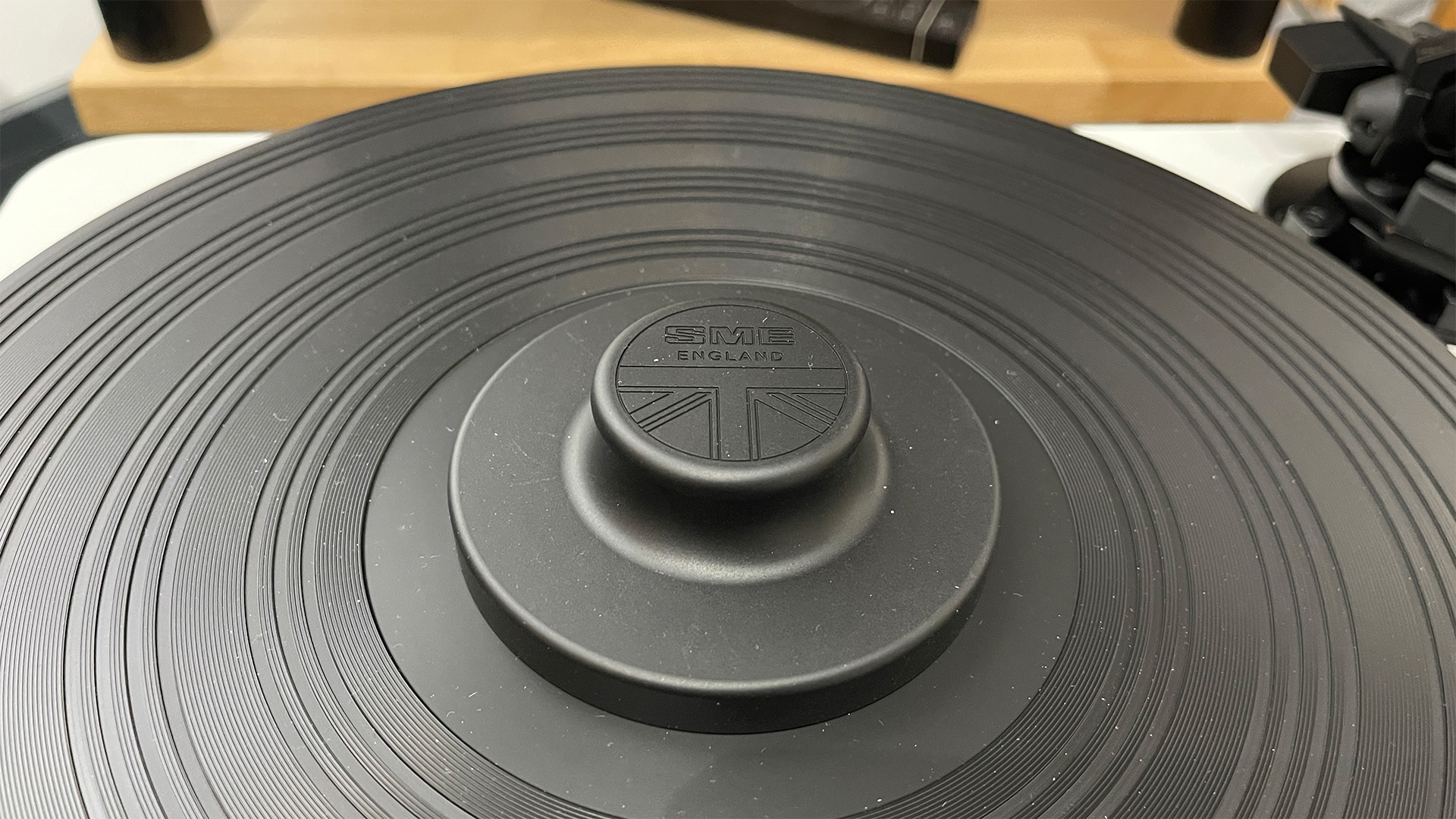
Make no mistake, the Model 8 is a hugely accomplished record player. It, and the partnering Series 309 tonearm, are beautifully engineered and clearly made to last. The turntable package is easy to set up and use, and given the relatively straightforward nature of its design, there is little to go out of adjustment over time.
The SME Model 8 is a fine performer, but at this elevated level, others manage to get closer to the spirit of the music being played.
Review published: 24th June 2025
SCORES
- Sound 4
- Build 5
- Features 5
MORE:
Read our review of the Vertere MG-1 Mk II
Also consider the Michell Gyro SE
Read our VPI Prime 21+ review
Best turntables: top record players tested by our expert reviewers

Ketan Bharadia is the Technical Editor of What Hi-Fi? He has been reviewing hi-fi, TV and home cinema equipment for almost three decades and has covered thousands of products over that time. Ketan works across the What Hi-Fi? brand including the website and magazine. His background is based in electronic and mechanical engineering.
- Andy Madden
- Harry McKerrellSenior staff writer
You must confirm your public display name before commenting
Please logout and then login again, you will then be prompted to enter your display name.

